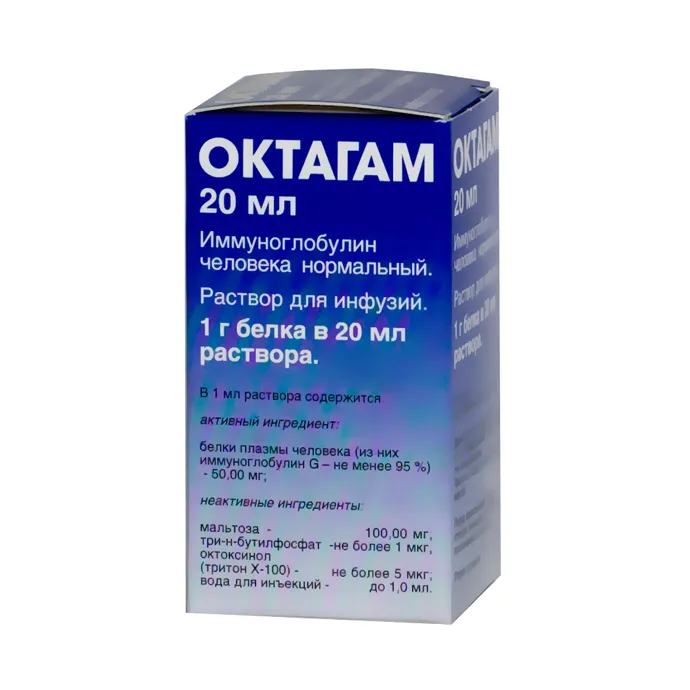Description
Octagam Solution for Infusions 10%
Ingredients
- Octagam solution for infusions 10% contains immunoglobulins obtained from human plasma.
Dosage
- The dosage of Octagam solution for infusions 10% should be determined by a healthcare professional based on the patient’s condition and weight.
Indications
- Octagam solution for infusions 10% is indicated for the treatment of primary immunodeficiency syndromes, such as congenital agammaglobulinemia and severe combined immunodeficiency.
Contraindications
- Do not use Octagam solution for infusions 10% if you have a history of severe allergic reactions to human immunoglobulins.
Directions
- Octagam solution for infusions 10% should be administered intravenously. The infusion rate should be adjusted according to the patient’s tolerance.
Scientific Evidence
Studies have shown that Octagam solution for infusions 10% is effective in the treatment of primary immunodeficiency syndromes. Research published in the Journal of Clinical Immunology demonstrated a significant increase in serum immunoglobulin levels in patients receiving Octagam infusions.
Additional Information
- Octagam solution for infusions 10% should be stored in a refrigerator between 2°C to 8°C. Do not freeze.
- Before administration, visually inspect the solution for any particles or discoloration.
- Octagam is a sterile solution and should be administered under the supervision of a healthcare provider experienced in the management of immunodeficient patients.





